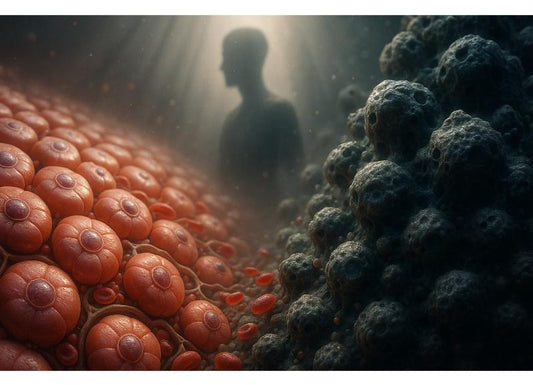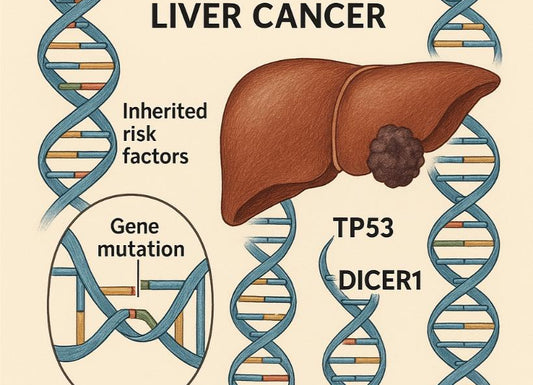Skin Problems Related to Liver Disease
 Written By
Abel Tamirat, MD
Written By
Abel Tamirat, MD

Your skin can reveal a lot about your liver’s health. When the liver isn’t functioning properly, toxins and waste products that would normally be filtered from the blood can build up in the body. This often leads to visible skin changes — one of the earliest warning signs that something may be wrong internally.
This article explains how liver disease affects the skin, what symptoms to look for, and when to see your doctor for evaluation.
How the Liver Affects the Skin
The liver is responsible for processing nutrients, breaking down toxins, and producing proteins that support circulation and clotting. When it becomes damaged or inflamed, these functions are disrupted.
As toxins accumulate and bile flow slows, the skin can begin to show changes in color, texture, and sensitivity. Many of these changes occur because the liver’s ability to filter bilirubin — a yellow pigment produced when red blood cells break down — becomes impaired.
When bilirubin builds up in the blood, it causes jaundice, the most recognized skin symptom of liver disease. But many other skin signs can appear as well.
If you’re noticing other signs of liver stress beyond skin changes, our guide to at-home liver tests explains how to check enzyme levels and monitor liver function safely at home.
Common Skin Problems Linked to Liver Disease
1. Jaundice (Yellowing of the Skin and Eyes)
Jaundice is often the first visible sign of liver dysfunction. It causes the skin and whites of the eyes to turn yellow due to excess bilirubin in the bloodstream.
It may also be accompanied by dark urine and pale stools. Jaundice can occur with many liver conditions, including hepatitis, cirrhosis, and bile duct obstruction.
2. Itchy Skin (Pruritus)
Itching is one of the most common and uncomfortable skin symptoms of liver disease. It often worsens at night or in warm environments and may affect the arms, legs, or entire body.
Pruritus is thought to result from bile salts building up under the skin or changes in how the body processes certain chemical messengers. Scratching may provide temporary relief but can lead to skin damage or infection.
3. Spider Angiomas (Spider Veins)
Spider angiomas are small, web-like clusters of blood vessels that appear just under the skin’s surface, often on the face, neck, upper chest, or hands.
They are caused by hormonal imbalances — particularly elevated estrogen levels — that occur when the liver cannot metabolize hormones effectively. These are common in people with cirrhosis or chronic hepatitis.
4. Palmar Erythema (Red Palms)
Palmar erythema is a reddening of the palms, particularly around the base of the thumb and little finger. It can occur in people with chronic liver disease, such as cirrhosis, and is also linked to hormonal changes caused by liver dysfunction.
The redness usually does not hurt or itch but may be warm to the touch.
5. Bruising and Bleeding Easily
When the liver is damaged, it produces fewer clotting proteins, making it easier to bruise or bleed. Even minor bumps may lead to visible purple or blue patches under the skin.
This can be one of the later signs of liver disease and often appears along with fatigue or swelling in the abdomen or legs.
6. Dry or Flaky Skin
People with liver disease often notice dryness, flakiness, or rough patches on the skin. This can result from malnutrition, dehydration, or vitamin deficiencies (especially vitamins A, D, and E) that occur when the liver cannot absorb or store nutrients properly.
7. Hyperpigmentation (Dark Patches on Skin)
Liver dysfunction can lead to changes in melanin production, causing dark patches or uneven skin tone — especially on the face, around the eyes, or on the hands.
This is more common in chronic liver diseases such as hemochromatosis (iron overload) or cirrhosis.
8. Rashes and Lesions
People with liver disease may develop rashes or blotchy areas caused by immune system changes or poor circulation. Some individuals with autoimmune liver conditions, like primary biliary cholangitis, experience recurrent skin irritation or small yellowish bumps called xanthomas, which are deposits of fat under the skin.
9. Yellow Bumps (Xanthomas)
Xanthomas appear as small, waxy, yellowish bumps — often around the eyes, elbows, or knees. They result from high cholesterol or triglyceride levels in people whose liver disease affects fat metabolism.

10. Swelling (Edema)
When the liver cannot produce enough albumin — a protein that regulates fluid balance — fluid may accumulate under the skin, especially in the legs, ankles, and feet. The skin may appear stretched or shiny.
11. Spider Nevi and Other Vascular Changes
In advanced liver disease, you may notice small red or purple marks that look like spiders, along with visible veins on the chest or abdomen. These occur as blood flow patterns change and pressure builds up in veins around the liver (portal hypertension).
Because liver and kidney health are closely linked, you may also want to explore our complete guide to at-home kidney function tests to understand how your kidneys contribute to toxin removal.
Why Skin Symptoms Should Not Be Ignored
Skin changes can appear before other signs of liver disease. While many conditions can cause dry skin or itching, symptoms that persist or occur alongside fatigue, nausea, or jaundice should be checked by a healthcare provider.
Ignoring early skin symptoms can delay diagnosis and allow liver damage to progress.
When to See a Doctor

You should contact your healthcare provider if you notice:
-
Yellowing of your skin or eyes.
-
Persistent or unexplained itching.
-
Sudden or frequent bruising.
-
Dark urine or pale stools.
-
Swelling in your abdomen or legs.
-
Unexplained rash or red spots.
Your doctor will likely order blood tests to check liver enzyme levels (ALT, AST, ALP, bilirubin) and may recommend imaging, such as an ultrasound or MRI, to assess liver structure.
Managing Liver-Related Skin Problems
Treating skin symptoms starts with addressing the underlying liver condition. Depending on the cause, your doctor may recommend:
-
Lifestyle changes: Reducing alcohol, maintaining a healthy weight, and following a balanced diet.
-
Medication: To treat viral hepatitis, control bile flow, or manage autoimmune liver disease.
-
Topical treatments: Moisturizers, soothing lotions, or prescription creams to relieve dryness and itching.
-
Antihistamines or bile acid binders: To control severe itching.
Simple home remedies like cool baths, mild soap, and loose-fitting clothes can also ease skin irritation.
Blood sugar imbalances can also worsen skin dryness and inflammation. Read our overview on glucose in urine to learn how metabolic health impacts your skin.
Nutrition and Skin Health

Because the liver helps absorb and store essential vitamins and minerals, poor liver function can lead to deficiencies that affect the skin.
Include foods rich in:
-
Vitamin A: Found in carrots, sweet potatoes, and leafy greens.
-
Vitamin D: From sunlight exposure or fortified foods.
-
Vitamin E: Found in nuts, seeds, and olive oil.
-
Zinc and selenium: Found in fish, eggs, and whole grains.
A registered dietitian can help tailor a liver-friendly diet to your needs.
For a simple, all-in-one way to check your overall health, the Ribbon Checkup Urine Test guide shows how at-home testing can reveal early signs of organ stress — including the liver.
The Bottom Line
Skin changes are often one of the first outward signs of liver disease. From yellowing and itching to redness and swelling, these symptoms can indicate that your liver is struggling to filter toxins and maintain balance in your body.
If you notice new or persistent skin problems — especially when combined with fatigue, nausea, or jaundice — talk to your doctor. Early diagnosis and treatment can prevent complications and help your liver recover.
Your skin is more than a mirror of your beauty — it’s a window into your overall health. Paying attention to these signs can make a real difference.
Want to check your liver health from home?
You can take an at-home liver enzyme and metabolic health test through Ribbon Checkup and get results in days.
Related Resources
References
-
Mayo Clinic. (2025). Liver Disease and Dermatologic Manifestations.
-
American Liver Foundation. (2024). Recognizing Skin Signs of Liver Damage.
-
NIH. (2024). The Connection Between Liver Function and Skin Health.
-
Cleveland Clinic. (2025). Liver Disorders and Associated Skin Changes.

Dr. Abel Tamirat is a licensed General Practitioner and ECFMG-certified international medical graduate with over three years of experience supporting U.S.-based telehealth and primary care practices. As a freelance medical writer and Virtual Clinical Support Specialist, he blends frontline clinical expertise with a passion for health technology and evidence-based content. He is also a contributor to Continuing Medical Education (CME) programs.



